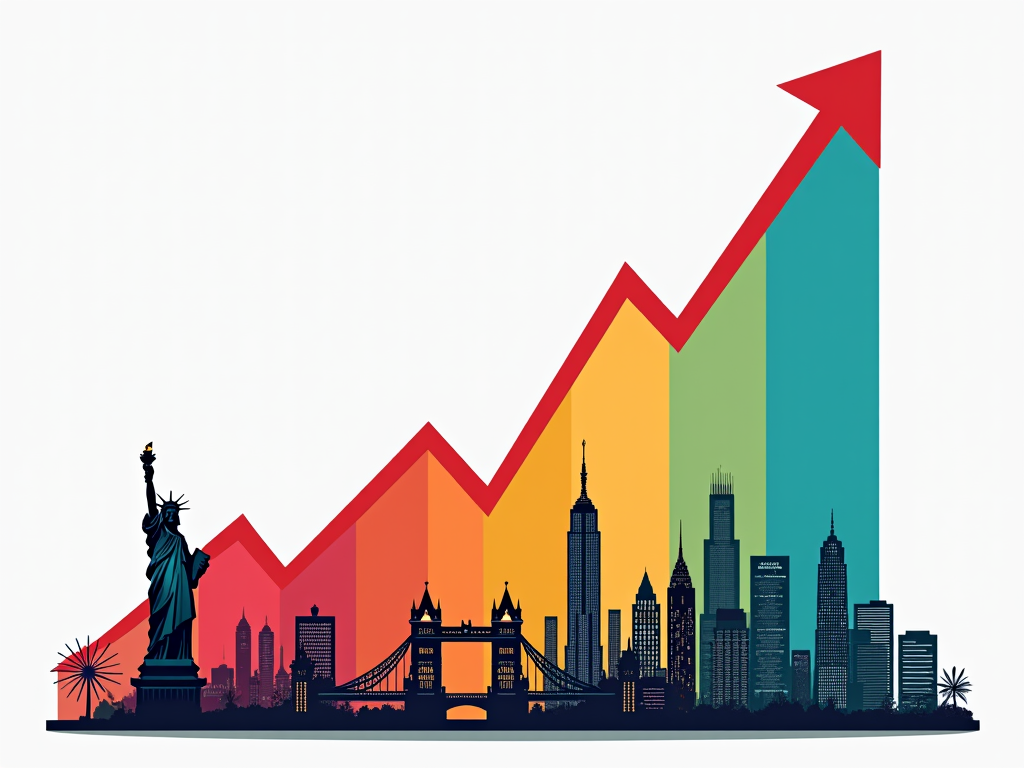The decision to invest in growth stocks is like navigating a sea full of possibilities. Emerging countries attract with high potential for growth and diversification, while developed countries offer stability and established markets. In this article, we will explore the opportunities and risks of both options and analyze the macroeconomic factors that influence these decisions. The following chapters will guide you through the complex world of growth stocks in these different economic spaces.
Opportunities and Risks: Exploring Growth Stocks in Emerging Countries

Investing in growth stocks in emerging countries adds a dynamic dimension to an investor’s portfolio, bringing new potential for growth but also greater risks. Although this chapter offers a comprehensive view of opportunities and risks, it is clear that a nuanced understanding of the markets is essential.
Emerging countries are characterized by robust economic growth and dynamic market trends, which are particularly appealing to investors. Countries like India and South Korea are pioneers in leveraging their rapid growth, promising significant returns. At the same time, diversification into these markets provides protection against stagnation, which can occur more frequently in developed economies. This increase in consumption, especially in the vast IT and tech sector, illustrates the potential of markets that continuously assert themselves against industrialized markets. However, along with the advantages, investing in emerging countries comes with significant challenges, including volatile political and economic environments that can pose greater risks for investors.
Volatility is often the main risk in emerging countries. Political instability can be triggered by sudden political or regulatory changes that directly affect investments. Large fluctuations in local currencies can also significantly affect the value of investments, while markets often reliant on commodities react sensitively to price changes. These risks are exacerbated by an environment of unpredictable regulations, which can hinder or facilitate investments.
In contrast to the more stable but less dynamic markets of developed countries, emerging countries offer high growth potential associated with greater volatility. Balancing these elements requires a well-considered and diversified investment strategy. However, the higher risk can be balanced by profit opportunities, provided that investors remain both patient and vigilant. Long-term commitments are often the key to capitalizing on this regional growth.
Diversifying investments across different countries can further reduce risk. Investors should consider consulting with specialized experts, utilizing actively managed funds that can guide their resources in identifying and capitalizing on growth companies. Finally, the key to successfully investing in emerging countries lies in meticulously analyzing risks and maintaining a long-term perspective that fully exploits the growth potential of these evolving markets.
The Influence of Macroeconomic Dynamics on the Growth Potential of Global Equity Markets

Macroeconomic factors act like the secret mechanisms that shape the potential of growth stocks in both emerging and developed countries. The subtle interaction between inflation, interest rates, economic growth, trade policy, and geopolitical tensions determines how these equity markets thrive or falter.
The influence of inflation and interest rates can lead to more stable market conditions in developed countries. These economies manage inflation with high precision, making them more resilient to shocks. In contrast, the unpredictable fluctuations of inflation rates in emerging countries can make their markets more volatile and entail both uncertainties and growth opportunities for investors. Regarding interest rates, there is a notable difference: developed countries often rely on higher interest rates, which can stimulate capital flows towards bonds and negatively affect equity markets. Emerging countries, on the other hand, often benefit from lower interest rates, which favor equity investments.
Economic growth represents a dynamic development in emerging countries, as they often experience faster growth rates. These rapid developments present the potential for extraordinary returns. In contrast, growth in developed countries is more stable and consistent, with companies benefiting from established markets and solid infrastructure.
Finally, trade policy and geopolitical tensions significantly shape the ecosystem of global markets. Protectionist measures can cause significant damage to both emerging and developed countries, but for the former, which are often more dependent on exports, this can be devastating. Likewise, geopolitical tensions can increase uncertainties and significantly disrupt the investment climate in emerging countries, while developed countries tend to appear more resilient.
In general, these dynamics reflect that growth stocks in developed countries benefit from stability and access to resources, while those in emerging countries are characterized by high growth potential. The central question for investors remains: what understanding of macroeconomic developments can best guide their investments? The answer lies in the balance between opportunities and risks.